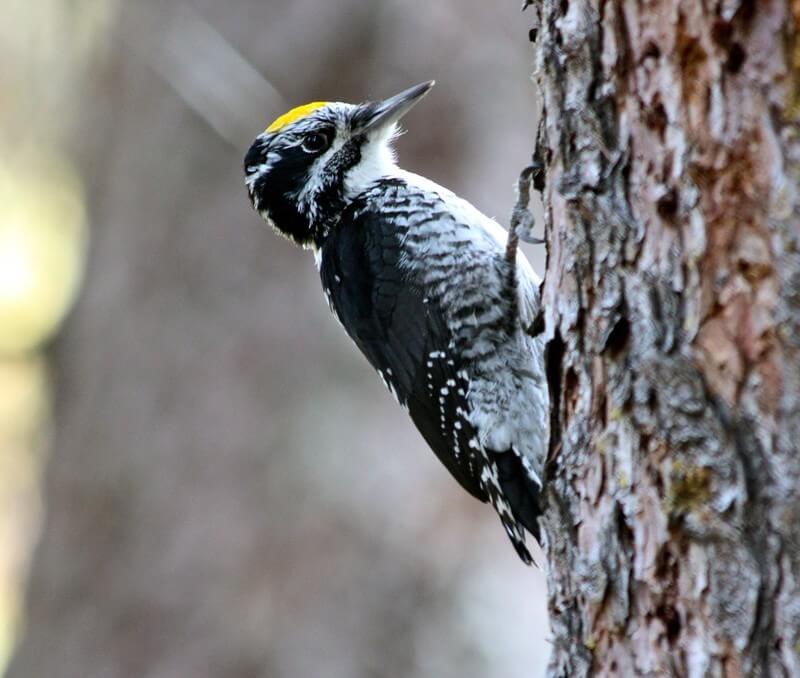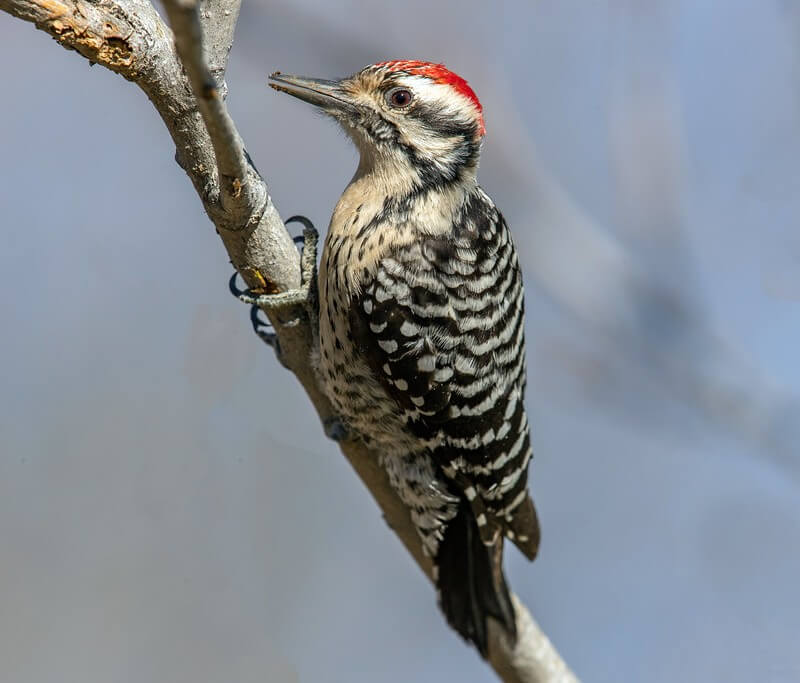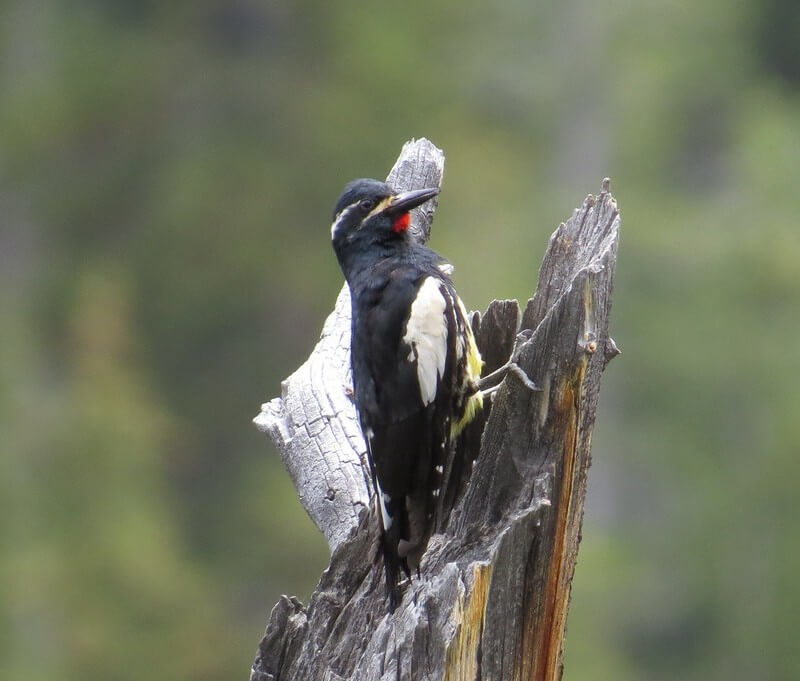Woodpeckers are a common sight in Colorado, with over a dozen species inhabiting the state. These birds are well adapted to the diverse geography of Colorado, from the high mountain peaks to the grasslands of the eastern plains. Woodpeckers are found in a variety of habitats, including coniferous and deciduous forests, riparian areas, and even urban parks. In Colorado, woodpeckers are most commonly seen in the foothills and montane forests, where they can find plenty of trees to feed on. They also use the dead trees and snags in these areas for nesting and roosting. Woodpeckers are important to the Colorado landscape, as they help to disperse seeds and create cavities for other wildlife to use. They also play an important role in controlling insect populations, helping to keep forests healthy. Woodpeckers are a vital part of the Colorado ecosystem, and their presence is a reminder of the importance of preserving our natural resources.
woodpeckers IN COLORADO
Read on to learn more about the 9 woodpeckers that visit Colorado.
American Three-toed Woodpecker

- Picoides dorsalis
- Size: 9″ (23 cm)
Identification and Color: The American Three-toed Woodpecker has a short body with a short, pointed, and strong bill. Males have a yellow patch on their heads. Speckled black and white on top and bottom, solid black in between, and white lines by the eyes.
Habitat and Behavior: Found in the far north, including Canada and Alaska, also found in the Rocky Mountain ranges. Prefers conifer forests with fir, spruce, and pine trees. Forages by picking small pieces of bark off trees and does not go very deep into them.
Diet: Mainly insect-based diet of beetles and caterpillars found in trees. They may also eat some fruits or sap.
What does an American Three-toed Woodpecker sound like?
Downy Woodpecker

- Picoides pubescens
- Size: 6″ (15 cm)
Identification and Color: Adult Downies are black and white, with a black back, white belly, and a small patch of red on the back of the head. They have a short bill and a barred tail.
Habitat and Behavior: Downy Woodpeckers live in forests, woodlands, orchards, and suburban areas. They are year-round residents in most of their range. They forage on tree trunks and branches, using their bills and barbed tongue to peck at bark to find food.
Diet: Downies feed on insects, spiders, berries, and nuts. Downies sometimes store food by caching it in cracks in trees or other hidden spots. Can be spotted at seed and suet feeders.
What Does a Downy Woodpecker sound like?
Hairy Woodpecker

- Picoides villosus
- Size: 9″ (22.5 cm)
Identification and Color: The Hairy Woodpecker is a medium-sized black and white bird with a long bill, a small head, and a long tail. Males have a small red patch on the back of the crown.
Habitat and Behavior: Prefers a dense forest. These woodpeckers are fairly common in wooded areas across the United States. Hairy Woodpeckers are known to be very curious and will often explore their surroundings by pecking at trees and wooded objects. (Ideally trees and not your house!)
Diet: Mainly insects and insect larvae found in trees. Will also eat berries, seeds, and nuts.
What Does a Hairy Woodpecker sound like?
Ladder-backed Woodpecker

- Dryobates scalaris
- Size: 7″ (18 cm)
Identification and Color: The Ladder-backed Woodpecker has a small but straight bill with squared heads and stiff tails. They have neat black and white stripes on their bodies and wings. The underparts are white with black spots. Males have red crowns, and females have black crowns.
Habitat and Behavior: Likes hotter temperatures in the southeast United States and further into Mexico and beyond. Enjoys dry areas like deserts, brush, and thorn forests. Will forage by hopping around branches but stays hidden in trees or vegetation.
Diet: The Ladder-backed Woodpecker eats insects like caterpillars, larvae, and ants. They will also eat berries and fruit, including the fruit of cacti.
What does a Ladder-backed Woodpecker sound like?
Northern Flicker

- Colaptes auratus
- Size: 12″ (30 cm)
Identification and Color: A fairly common large woodpecker, but size is where the similarities to other woodpeckers end. The male Northern Flicker is unique with a brown back, black bars and spotted breast. All North American Flickers have white rumps. There are also two different color groups of Northern Flickers – Yellow-shafted and Red-shafted. Yellow-shafted flickers have yellow underwings. Red-shafted flickers have reddish pink underwings.
Habitat and Behavior: Northern Flickers are hole-nesting birds, often making a home in a dead tree. Can be seen hopping around the ground while foraging or latched onto a tree eyeing a spot to search for food.
Diet: Northern Flickers mainly eat insects off the ground, but will also eat berries and nuts.
What does a Northern Flicker sound like?
Red-bellied Woodpecker

- Melanerpes carolinus
- Size: 9″ (23 cm)
Identification and Color: The Red-bellied woodpecker gets its name from the vaguely-visible reddish color on its belly, which is typically only seen when the bird is perched. They have a black and white striped back, white underparts, and a red nape.
Habitat and Behavior: The Red-bellied Woodpecker is a non-migratory bird, meaning it will stay in the same general area year-round. Forages for insects in trees or catches them in air. Can dominate other smaller woodpeckers and birds at feeders.
Diet: Consists mainly of insects and other invertebrates. Will also eat seeds, nuts and fruit.
What does a Red-bellied Woodpecker sound like?
Red-headed Woodpecker

- Melanerpes erythrocephalus
- Size: 9″ (23 cm)
Identification and Color: Red-headed Woodpeckers have black backs, a large white patch and underparts, then black at the tip of the tail. Male adults have bright red heads. These birds are medium-sized woodpeckers and have rounded heads with powerful spear-like bills.
Habitat and Behavior: Red-headed Woodpeckers in northern and western areas usually migrate to southeastern states during the winter. Prefers open forests with cleared areas. Will forage by pecking trees, catching insects in the air, or on the ground.
Diet: Omnivorous diet consisting of berries, insects, and even some small rodents occasionally.
What does a Red-headed Woodpecker sound like?
Red-naped Sapsucker

- Sphyrapicus nuchalis
- Size: 8″ (20 cm)
Identification and Color: Males and females have red crowns and black and white large striped heads. The tops of their bodies and wings are mostly black, with some white. The underparts are mottled black and white. Males have red chins, and females have white chins. A medium-sized woodpecker with a sharp bill.
Habitat and Behavior: Located throughout the west, breeding in the north and wintering in the southern half. Likes mixed forests and woodlands, generally avoiding oak or pines during the breeding season. Will climb around trees and make many holes in them.
Diet: The Red-naped Sapsucker feeds on insects, fruits, and tree sap. May also eat some berries.
What does a Red-naped Sapsucker sound like?
Williamson’s Sapsucker

- Sphyrapicus thyroideus
- Size: 10″ (25.5 cm)
Identification and Color: Males are more solidly black, with white marks underneath and white stripes on the head. Males have a red throat patch. Females have brownish heads and black and white barring on their bodies. Both males and females have a yellow patch on their bellies. They have long wings for their stout bodies.
Habitat and Behavior: Found in different areas of the west, they like open forests that are mixed and mature. Forages by making small holes in trees and will also eat insects off the tree bark.
Diet: The Williamson’s Sapsucker enjoys insects, sap, and fruit. Generally eats a variety of insects during the breeding season.
What does a Williamson’s Sapsucker sound like?
Conclusion
Woodpeckers are an important part of Colorado’s wildlife, and they play an important role in the environment. They are a keystone species, meaning they help to maintain the balance of the ecosystem. They are also an important food source for many other animals, including hawks, owls, and other birds. Woodpeckers are also a great source of entertainment for birdwatchers and nature enthusiasts. With their unique calls and colorful feathers, they are a sight to behold. With proper protection and conservation, woodpeckers can continue to thrive in Colorado for many years to come. Protecting and preserving woodpeckers is essential to maintaining the health of Colorado’s forests and the wildlife that inhabit them.
Before you go, be sure to check out our other articles about birds in Colorado.






